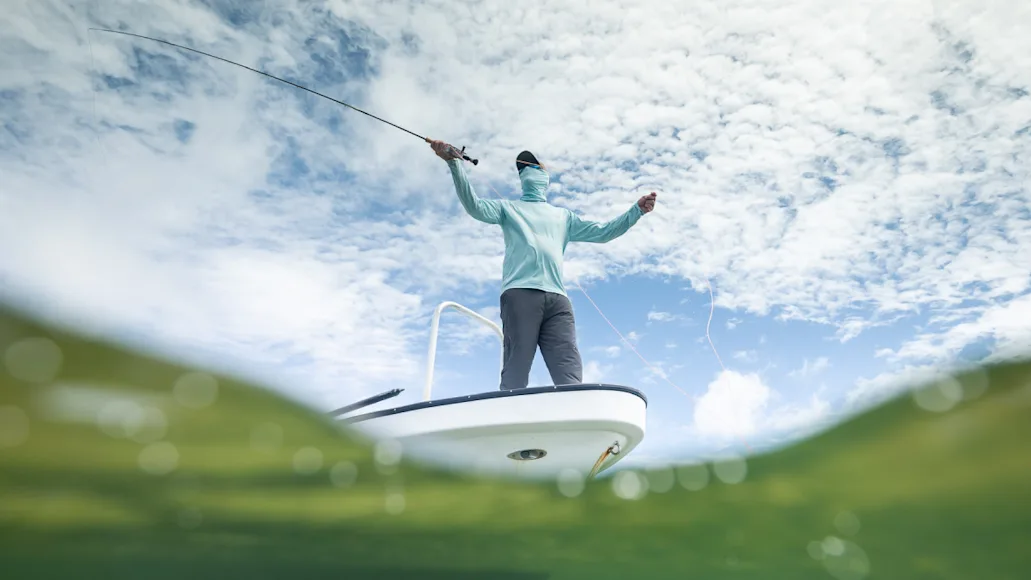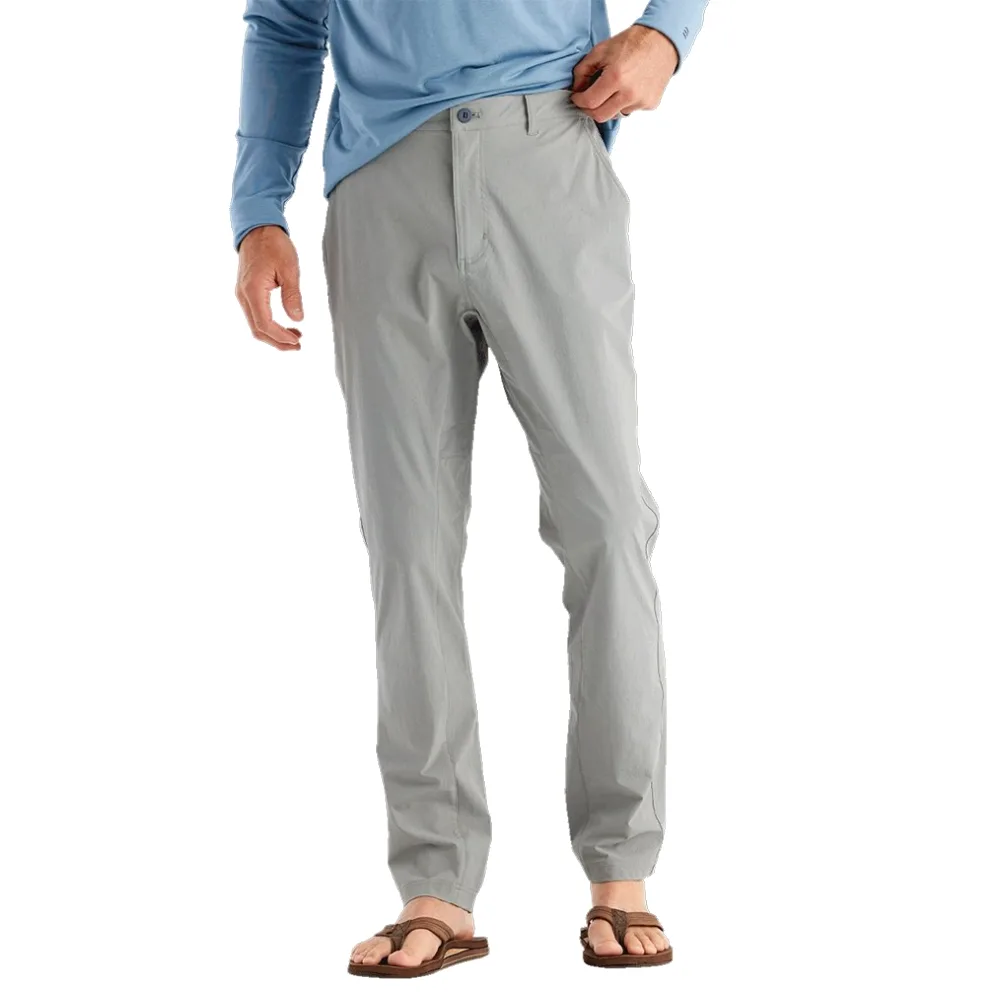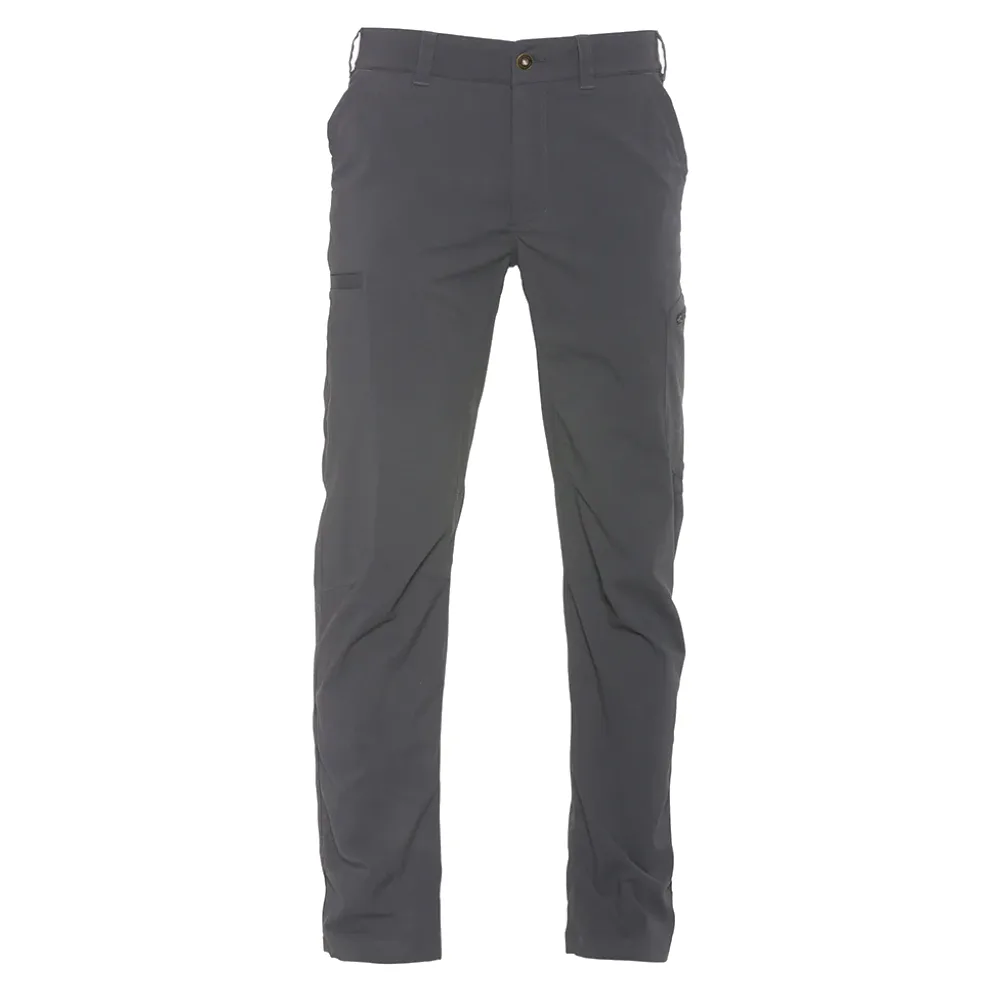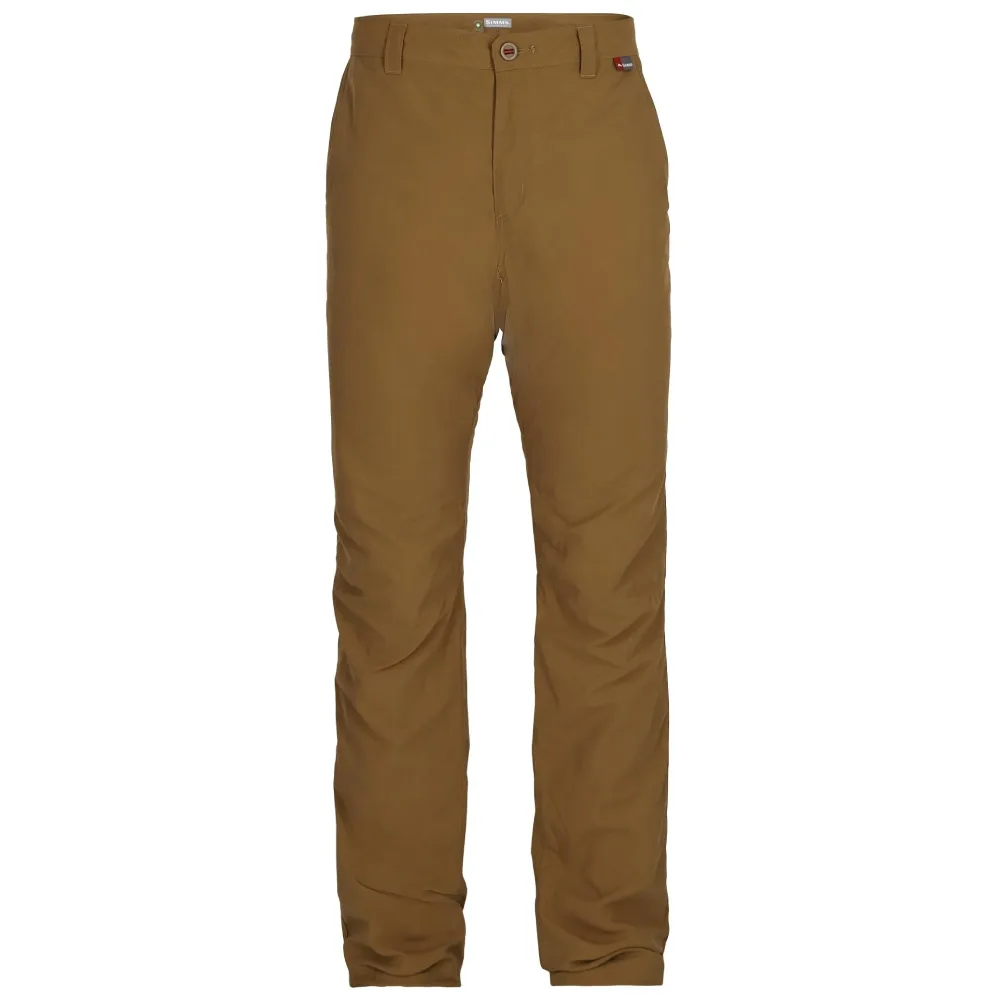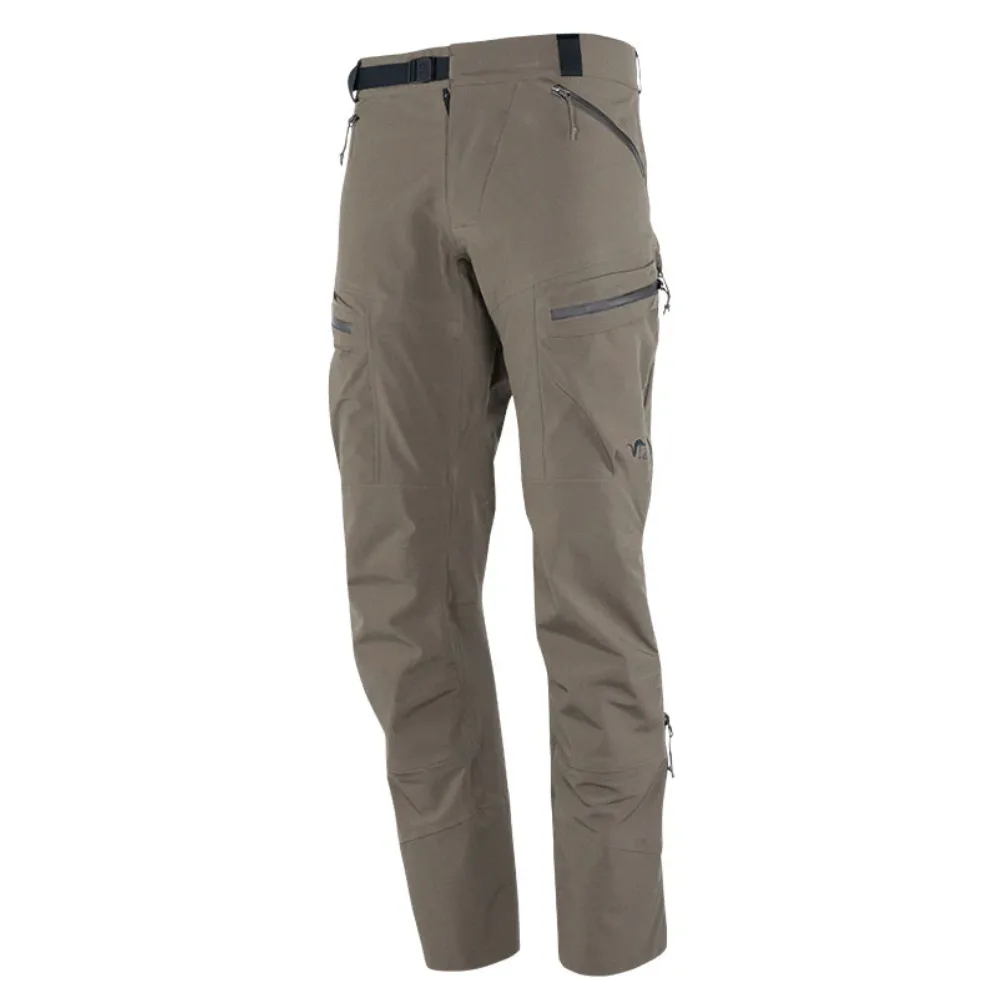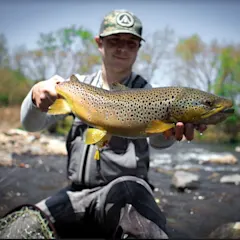We may earn revenue from the products available on this page and participate in affiliate programs. Learn more
Anglers, above all things, are particular. We obsess over rods, reels, lures, tides, and even the moon phase. When we spend this much time perfecting gear and waiting for conditions to align, it’s important that our apparel is ready for the occasion. Long gone are the days of wearing blue jeans on the water. Today’s fishing pants are lightweight, breathable, and moisture-wicking.
The right pair of pants will ensure you can fish comfortably all day for the bite you’ve been waiting for. To find the best fishing pants for any scenario, I hit the water, rain or shine, and put some of the most popular pairs from Columbia, Simms, and more to the test.
Best Overall: Free Fly Latitude Pant
Best Budget: Columbia Silver Ridge Convertible Pant
Most Durable: Grundéns Gaff Pant
Best for Hot Weather: Simms Bugstopper Superlight Pant
Best for Fly Fishing: Huk Next Level Pants
Best for Ice Fishing: Stone Glacier M7 Pant
Most Comfortable: Striker Tournament Pant
Most Versatile: Sitka Mesa Pant
Best Lightweight: Forloh SolAir Lightweight Pant
Best Overall: Free Fly Latitude Pant
Specs
Material: Nylon blend offering quick-dry, stretch woven with DWR
Fit: True to size
UPF Rating: 50+
Sizes: S-XXL
Pros
Lightweight
Dries incredibly quick
Stretch material offers a wide range of movement
Cons
Must follow garment care instructions to get the longest life out of this pant
For good reason, Free Fly continues to grow in popularity amongst anglers. The founders—who we got to sit down with in an exclusive “Behind the Brand” interview—started the outdoor brand with the goal of creating comfortable performance apparel for those on the water. The Free Fly Latitude Pant lives up to that mission. This is a true technical fishing pant, lightweight and quiet. I recently took a pair to the Bahamas in search of bonefish. It was a completely DIY trip, meaning there were no boats—simply wading boots and miles covered.
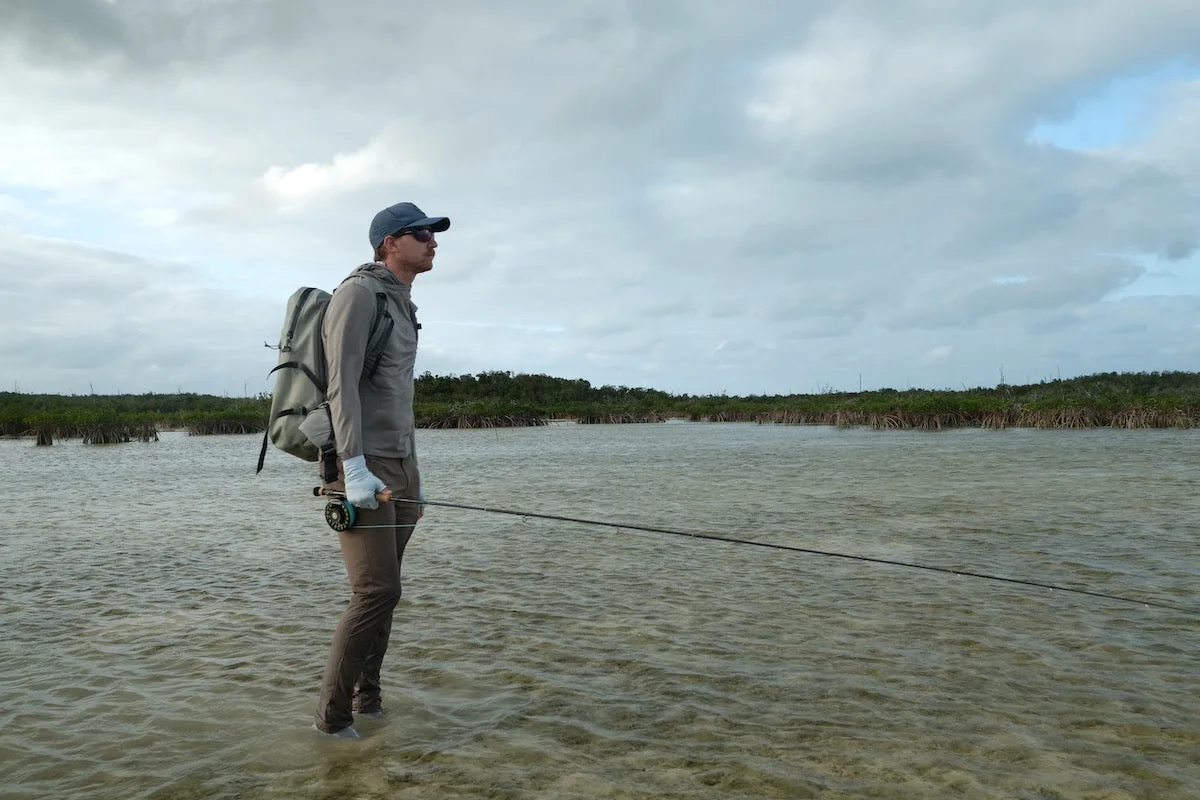
While most anglers may lean towards shorts for a trip like this, the Free Fly pants excelled. The breathable bamboo material offered adequate sun protection in the crystal clear water, along with an extra layer of protection from shell fragments. It also dried surprisingly quickly, even after being totally submerged in the water.
I found myself going back to these pants day after day for their sheer comfort alone. The attention to detail—with features like a partial elastic waistband and zippered pockets—along with the built-in UV protection and fast-drying fabric makes these at home on any water body.
Best Budget: Columbia Silver Ridge Convertible Pant
Specs
Material: Nylon ripstop
Fit: Slightly small
UPF Rating: 50
Sizes: 28-54W, 28-36L
Pros
Lightweight
Plenty of pockets
Easy to convert to shorts
Affordable do it all pant
Cons
Pants run slightly small
A convertible pant is a staple in many anglers’ wardrobes for its versatility. Columbia’s take on this classic style is the Silver Ridge Convertible pants. Like other fishing pants, it’s constructed from a breathable nylon material that offers a lightweight feel and quick-drying properties.
The beauty in these pants is that you can convert them into a pair of 10-inch cargo-style shorts with a single zip. Each leg features a lower zippered pocket for a total of six pockets, including standard and rear pockets. As a former fisheries biologist, I put these through the paces daily for two years. In fact, they are the only pair of pants I still have and regularly use from my time as a biologist.
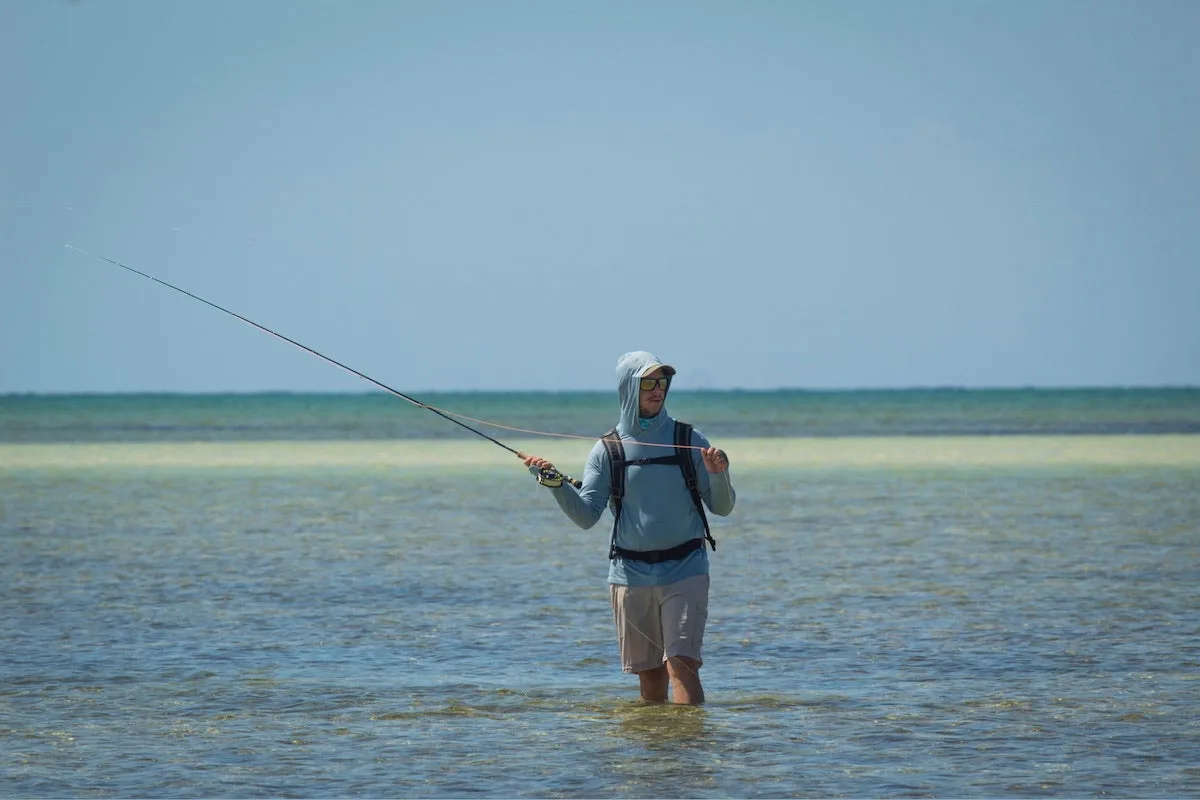
Factor in that they are half the price of most fishing pants and double as a pair of shorts, and there is no doubt these are the best budget pick.
Most Durable: Grundéns Gaff Pant
Specs
Material: Nylon fabric with engineered stretch
Fit: Slightly small
UPF Rating: 50
Sizes: 30-42W
Pros
Great for colder days on the water
DWR finish repels water and stains
Built-in tool pocket for knives/pliers
Cons
Slightly heavy for the hottest summer days
Of all the fishing pants I own, none are as durable as the Grundéns Gaff Pant. I attribute this to the fabric Grundéns chose. While it’s nylon with a similar feel to hiking pants, it is substantially thicker than anything I’ve tested. The pants are tough and rugged, and have lasted me years on the water so far.
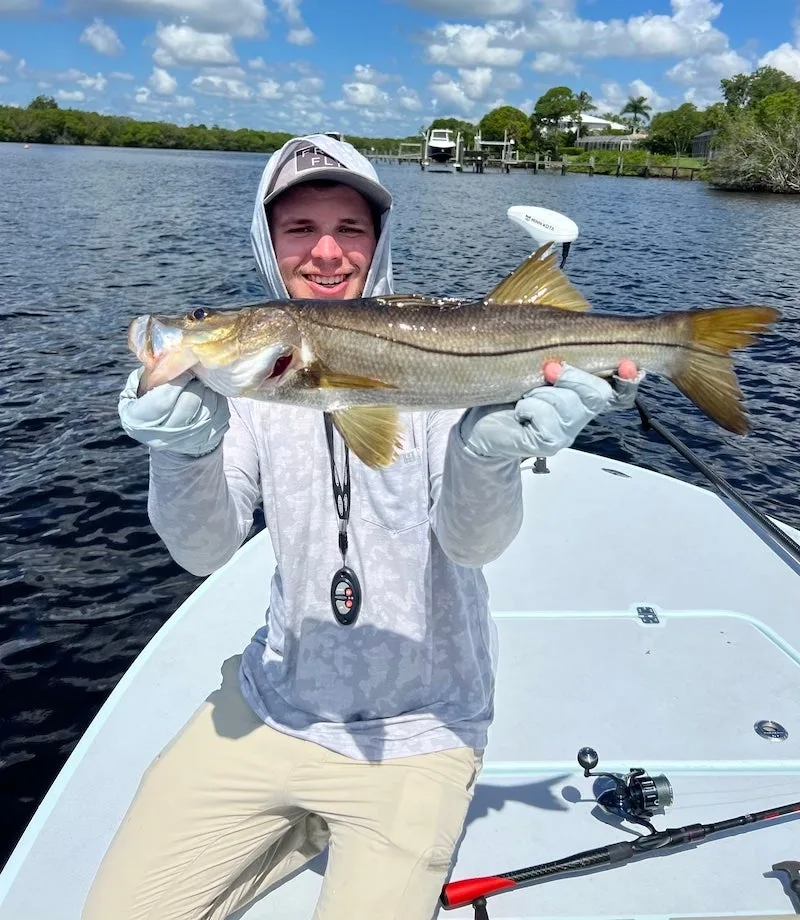
To add to the durability factor, the pants feature a water-resistant DWR coating, which repels liquids. This keeps me dry while I’m fishing and also reduces the risk of stains to extend the longevity. This pant comes ready with a convenient tool pocket on the right leg for die-hard anglers like myself. I like that I can keep my gear of choice—whether that’s a fishing knife or a pair of pliers—an arm’s reach away when needed.
Best for Hot Weather: Simms Bugstopper Superlight Pant
Specs
Material: Nylon
Fit: True to size
UPF Rating: 50
Sizes: 30-42W
Pros
Incredibly lightweight
Treated with Insect Shield
Adjustable and lockable hem
Cons
Expensive
Hot weather means bright days and a strong sun. While shorts may seem like a great option, sunburn is inevitable if you’re not careful. The best solution is a light and comfortable pair of fishing pants like the Simms Bugstopper Superlight Pant. These pants are amongst the lightest I’ve found and offer excellent mobility.
While many pants will hold up against heat, few will hold up against bugs and heat. Simms Bugstopper technology weaves Insect Shield into the nylon fabric to ward off mosquitos and other unwanted pests. The warm-weather material is thin and breathable yet manages to prevent insect bites at the same time.
I was skeptical at first, but after a day spent fishing the Everglades in peak mosquito season, I witnessed nothing short of a miracle. Motoring back to the ramp with a boat full of complaining anglers, I was the only one to escape bite-free (from the waist down).
Best for Fly Fishing: Huk Next Level Pants
Specs
Material: 52% cotton, 40% polyester, 8% spandex
Fit: Slightly small
UPF Rating: 30+
Sizes: S-XXXL
Pros
Excellent moisture-wicking capability
Stylish looks
Lightweight and breathable
Cons
Sizing quirks
Limited colors
Huk continues to offer incredible fishing apparel options, and the Next Level pants are no exception. They are lightweight, comfortable, and stylish, suitable for more than just fishing. Huk advertises these pants as fast drying and as good as advertised. However, I also noticed the fabric beads up water and wicks it away nicely. That makes it ideal for any scenario where an angler is liable to get wet. Add a comfortable waistband and 30+ UPF sun protection, and these pants are the total package for fly anglers.

The only issue I encountered during testing is that these pants run slightly small. I wear a 42-inch waist and went with an XL. Only after that did I see that Huk’s size 42 equivalent is an XXL. The pants still fit and were very comfortable, but they could have fit better in an XXL. This issue probably won’t affect most anglers, and if you know about it in advance, it’s a non-issue. Huk only offers two colors right now. Hopefully, they’ll expand the options because these are excellent fishing pants for the price. —Travis Smola
Best for Ice Fishing: Stone Glacier M7 Pant
Specs
Material: Polyester face with fleece interior
Fit: True to size
UPF Rating: N/A
Sizes: M-2XL
Pros
Vented sides
Fleece lined
Waterproof
Cons
Expensive
Stone Glacier is a brand built on building premium backcountry hunting apparel in solid colors. While they excel on the mountain, they’re just as good for any outdoor pursuit—including fishing. The M7 Pant falls into this category and doubles as an excellent ice fishing pant with many options not found on traditional ice fishing pants.

In my experience, one of the major highlights are the full-length leg zips. If you’re hauling gear long distances, unzip these vents to regulate your body temperature and prevent sweating. Next, these pants are fleece-lined with plenty of insulation, giving an added level of warmth on particularly cold days. But what good are ice fishing pants if they can’t keep you dry? The M7 series is designed for colder weather hunts in snow and ice, so the fabric sheds water incredibly well while remaining surprisingly breathable. If you’re looking for a new pair of ice fishing pants, it’s hard to go wrong with Stone Glacier. Plus, you’ll be ready for late-season hunts.
Most Comfortable: Striker Tournament Pant
Specs
Material: Nylon and spandex
Fit: Slightly large
UPF Rating: 50+
Sizes: 32/30-40/32
Pros
Stretchy, comfortable waistband
Breezy in hot weather
Solid price point
Cons
Odd sizing quirks
Striker’s Tournament pants are easily some of the most comfortable I’ve ever worn. This is thanks to a stretchy, elastic waistband that doesn’t dig, even with a tighter belt. After using the pants for months, they have proven extremely rugged and durable. They are comfortable enough that I’ve used them for other outdoor activities, like hiking, with no issues. I recently hiked on some warmer days in Florida with these pants. They did a nice job wicking away moisture and keeping air circulating.

This is another pair of pants with some sizing quirks. I wore a 40-inch waist for this test. This didn’t affect the fit, but it caused me to pause when I didn’t see my size on the site. It’s hard to tell if the elastic waistband makes it work because the Striker 40 appears to be the same as pants I own with a 42-inch waist. Besides that, these pants have been outstanding for warm-weather fishing scenarios. I also like the price and look of these pants. They’re affordable and work nicely for casual settings off the water. It helps add to the overall value whenever I use fishing pants for more activities. —TS
Most Versatile: Sitka Mesa Pant
Specs
Material: 90% polyester, 10% elastane stretch
Fit: True to size
UPF Rating: N/A
Sizes: 30R- 42R
Pros
Excellent pockets
Versatile beyond fishing
DWR finish and odor control are a bonus
Cons
Expensive
Sitka is best known for its high-end hunting clothing, but it is starting to market to anglers. The Mesa pants are a great starting point. During testing, I found these pants were excellent on the water from my kayak. They are stretchy and comfortable. The designs of the knees allowed excellent movement while working my kayak’s pedal drive. I also like the deep pockets for stowing my knives and other small items. These pants strike a good balance between being heavy enough for early spring fishing and still breezy enough for warmer months. I like the durable water repellent finish. It’s not as heavy as dedicated rain gear but helps these pants dry out quickly.

These pants have a premium price point like all of Sitka's gear. The material is also a little noisy. It’s not a big deal if one knows to expect some swishing sounds. However, these pants will work great for both angling and some warm-weather hunting scenarios that don’t require excess movement. These would be ideal for late summer teal, doves, or springtime turkeys from a blind.
Best Lightweight: Forloh SolAir Lightweight Pant
Specs
Material: Brrr Pro fibers and polygiene
Fit: True to size
UPF Rating: 50+
Sizes: 28-44
Pros
Extremely comfortable
Made in the USA
Excellent pockets
Cons
Belt loops feel a little small
The SolAir pants are incredibly lightweight and breathable, perfect for warm weather scenarios. Forloh put much thought into this design, especially the knees and crotch area. Neither bunches up nor pinches, allowing for a great range of motion. These pants will likely be a go-to option this summer on my fishing kayak because they will make it very comfortable to operate the pedals. Forloh’s use of Polygiene odor-reducing tech is another excellent feature of these pants. It helps considerably if the pants get bait or fish slime on them. The pockets have excellent zippers that never got stuck or bound up. I also appreciate the larger pulls. They’re easier to manipulate in cold weather than other pants we tested.

These pants have belt loops that are slightly smaller than usual. I had some trouble feeding my favorite belt through them. It fit, but it took a little more effort to get through. I suspect a wider belt or a gun belt wouldn’t fit them. Still, these were easily the lightest pants we tested, making them incredibly comfortable. Forloh is also easy to support, considering they make all their products in the USA. Their gear comes with a slightly higher price tag that reflects this. However, the quality of their products shows in every stitch, making them a worthy investment. —TS
How We Tested Fishing Pants
Finding the best fishing pants requires time on the water. Over the past year, I’ve spent countless days fishing with every pair of pants I could get my hands on. From poling flats for tarpon, wet wading for bonefish, and chasing trout in Colorado, these pants saw use in every climate imaginable. For a fishing pant to stand out from the rest, they had to be versatile enough to handle this diversity.
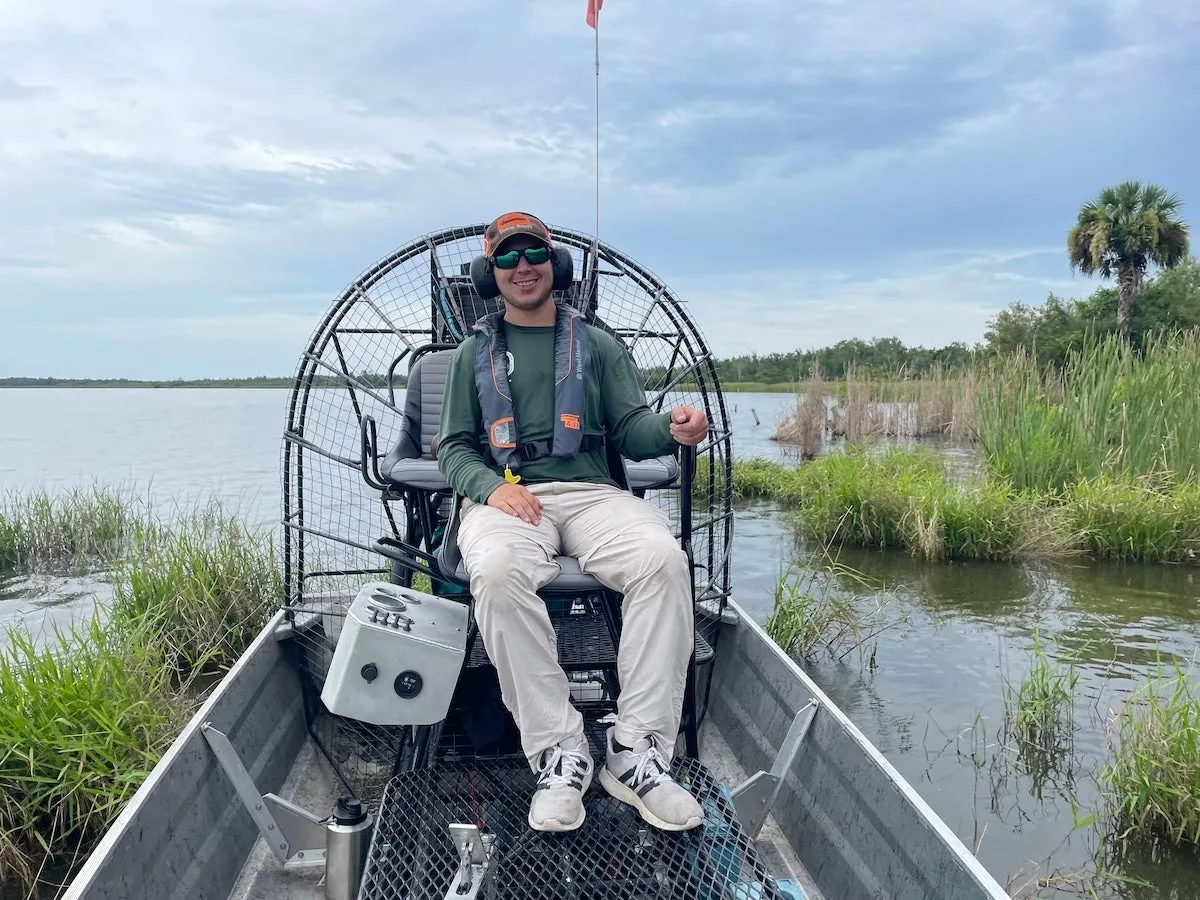
On top of that, they had to offer fundamental basics anglers come to expect with technical fishing apparel. This meant they had to be breathable, durable, moisture-wicking, and above all, comfortable. The pants that made this list did just that and more.
What To Look for in Fishing Pants
The fishing apparel market can be quite daunting from the outside. Countless companies market their pants as the best, and new products flood the market every year. Before you decide to add to your wardrobe, here are the most important things to consider.
Fit
When it comes to anything clothing-related, fit is first and foremost, and fishing pants are no different. Finding pants that fit properly will lead to more enjoyable days on the water. The first thing I look for is overall fit. Think, how does the waist fit? Is the inseam sized properly? You’re headed in the right direction once you find a pair that fits properly. The last thing to consider is the range of motion. Make sure the fabric does not restrict your movement, such as lifting your leg. It’s one thing for them to fit right in the store, but hopping over boulders in a stream is another story. When you can, try them on in the store to answer all these questions.
Features
Fishing pants may seem relatively simple, but between brands and models, there are endless features. Determine how you plan to use these pants most to find the features that maximize time fishing. For instance, if you constantly reach for pliers, look for a pair with a plier pocket. Countless options are available, including zip-off pants, bug-repelling, and waterproof. Take the time to find what you really need to get the most out of your investment.
Durability
Finding durable fishing pants can be surprisingly difficult. I’ve ripped more pants than I care to admit. I even ripped an entire thigh off a pant, jumping into my truck several years ago. When you invest in technical fishing apparel, you want to know if it will hold up. Look for things like quality fabric, double or even triple stitching, and quality hardware. If a pant has all these, some time went into the design to make sure it would hold up for seasons to come.
Price
Fishing pants range widely in price from budget-friendly options to pants costing as much as designer jeans. Regardless of your budget, there is an option for you. A pair of fishing pants must meet three basic requirements. They must be lightweight, breathable, and comfortable. If you find a pair of pants that meet all these and are in your budget go for it. Don’t buy into marketing tactics and names.
FAQs
Q: What’s the best material for fishing pants?
Plenty of materials and blends are used in fishing pants, but the most popular is nylon. Pants built with nylon and nylon blends are breathable, moisture-wicking, and comfortable. For the best performance, read the tag and opt for pants with nylon as the primary material.
Q: What color should you wear fishing?
Color is an important part when it comes to catching fish. Fish have surprisingly good eyes, and if you come unprepared, they’ll leave before you even get a shot at them. That said, color is also very dependent on where you fish. Anglers fishing clear saltwater flats should opt for a blue or light tan. These colors blend in well with the sky and hide well, even with wary fish.
For anglers fishing around dense foliage, green and brown are great colors. They blend in well with trees and leaves to conceal your presence.
Q: When should you wear pants vs waders?
The biggest factor for deciding between waders and pants is water temperature. Generally speaking, the 60-degree threshold is where I start to lean toward fishing pants. In trout streams, this typically coincides with summer. With warm air and warming water, waders start to become hot and uncomfortable. While this water temperature may seem cold to some, the pants add a level of protection, and if you’re constantly on the move, you won’t have an issue.
Final Thoughts
Serious anglers demand the most out of their gear, and fishing pants are no exception, whether you’re freezing on the ice or baking in the sun on a bass boat. The right pants can keep you on the water and the fish longer. With countless days fishing over the past few years, I’ve tried just about everything. The best fishing pants are equal parts lightweight, breathable, and moisture-wicking, and let me fish comfortably for hours on end. I’ve found the Free Fly Latitude pants check all those boxes—and more.
Why Trust Us
For more than 125 years, Field & Stream has been providing readers with honest and authentic coverage of outdoor gear. Our writers and editors eat, sleep, and breathe the outdoors, and that passion comes through in our product reviews. You can count on F&S to keep you up to date on the best new gear. And when we write about a product—whether it’s a bass lure or a backpack—we cover the good and the bad, so you know exactly what to expect before you decide to make a purchase.

